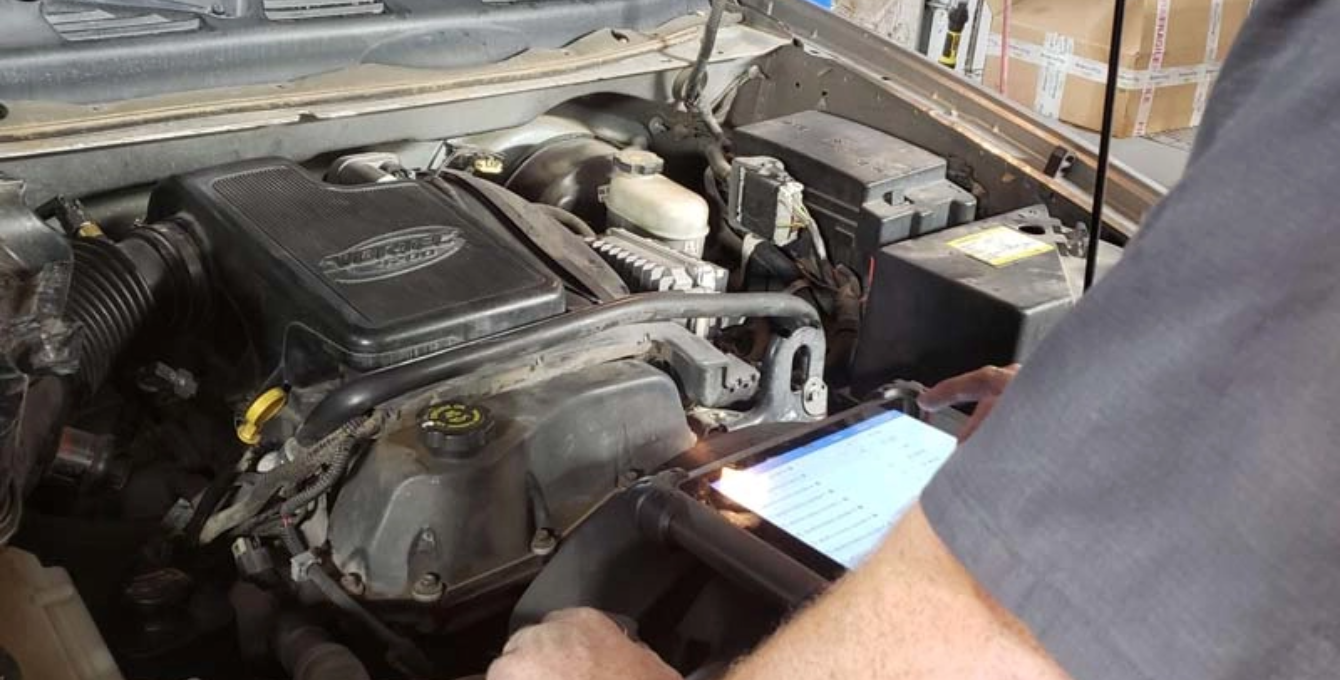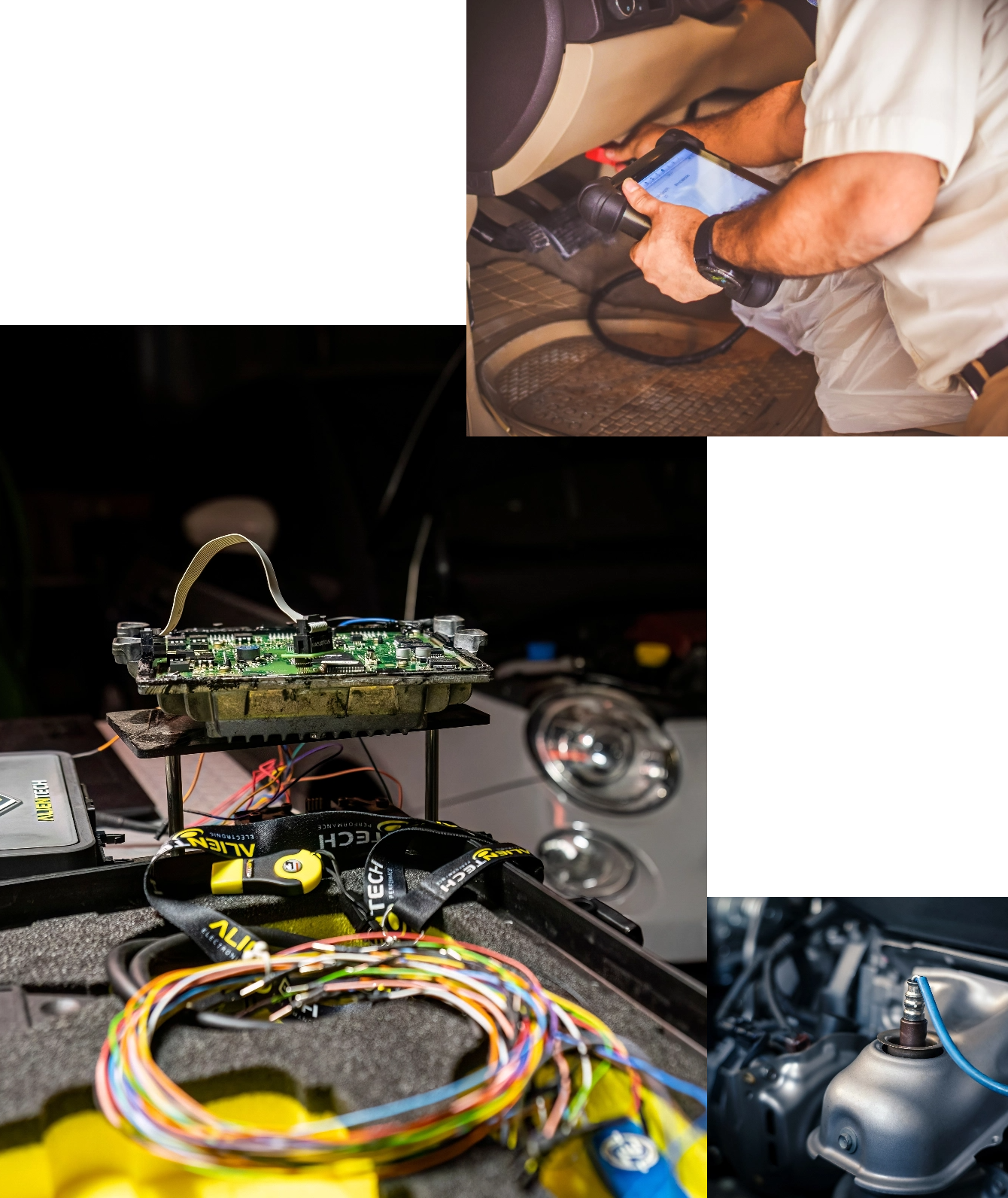Menu
When vehicles were first introduced—and right through the late 1960s—auto technicians had to diagnose them without the help of computers. Although Volkswagen first used onboard diagnostics in 1968, the system didn’t become popular until many years later. It wasn’t until 1996 that the government required onboard diagnostics on vehicles, and by then, the system had evolved to OBDII.
That pesky check engine light comes on when the computer can’t adjust sensor readings for the correct air-to-fuel mixture and other factors. The electronic control module (ECM) tries to make adjustments first and then stores a code when a sensor senses something is wrong. The computer system in a vehicle is quite complex and can provide a wealth of information about the vehicle.


The ECM lets you know when an issue crops up so you can take care of it before it turns into costly repairs. For example, you may not hear engine knock, but the ECM can sense it and warn you before it causes major engine damage.

One thing always affects another in a vehicle. When you can address issues sooner rather than later, you can avoid expensive repairs caused by one malfunction damaging other engine parts.

The sensors optimize the engine’s performance and ensure the correct air-to-fuel mixture is being used, saving you money on fuel.

Other diagnostics warn you of issues by illuminating warning lights, such as the airbag warning light and brake warning light, etc.
Yellow City Car Care uses diagnostics to ensure auto repair is done correctly the first time. The code stored by the computer is just a clue as to what might be wrong; we must further diagnose the problem. For example, an oxygen sensor code doesn’t necessarily mean the oxygen sensor is faulty. It could indicate a mixture imbalance caused by another sensor malfunctioning, worn spark plugs, or a bad injector. It could even be faulty wiring to the oxygen sensor.
We also have diagnostic tools for other issues, such as fuel system problems and air conditioning and heating malfunctions.
The various sensors on a vehicle monitor the engine’s operation and send information to the electronic control unit. Sensors include knock sensors, oxygen sensors, vehicle speed sensors, coolant temperature sensors, MAP sensors and more.
The electronic control unit or module (ECU or ECM) is your vehicle’s brain. It receives information from some sensors and makes adjustments using other sensors for the engine, transmission and brakes (ABS).
The port is usually located under the driver’s side dash. Our tech’s diagnostic tools connect to your vehicle’s computer system through the port. We can read trouble codes and clear them through the port.
In addition to code scanners, we also use various other diagnostic tools that help us pinpoint the problem. The equipment can display waveforms for various sensors, check power input, and more.
We also use diagnostic software to interpret information from the vehicle’s ECM. This software puts the information into a user-friendly format, complete with visual charts and problem descriptions, helping us to better diagnose issues.

If you notice the check engine light or any other warning light on your dashboard, don’t wait to have it diagnosed, even if the vehicle seems to be running fine. Some issues, such as a knock sensor alert, could lead to internal engine damage if not addressed.
When you need a trusted auto repair technician with certifications, contact Yellow City Car Care at (806) 418-6021 for an appointment. We are conveniently located at 7820 SW 77th Ave., Amarillo, TX 79119.


Mon-Thurs: 8 AM-6 PM
Fri: 8 AM-5:30 PM
Sat-Sun: Closed


Mon-Thurs: 8 AM-6 PM
Fri: 8 AM-5:30 PM
Sat-Sun: Closed
visibility_offDisable flashes
titleMark headings
settingsBackground Color
zoom_outZoom out
zoom_inZoom in
remove_circle_outlineDecrease font
add_circle_outlineIncrease font
spellcheckReadable font
brightness_highBright contrast
brightness_lowDark contrast
format_underlinedUnderline links
font_downloadMark links